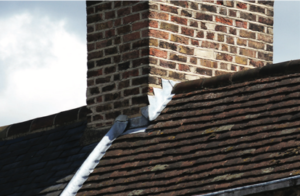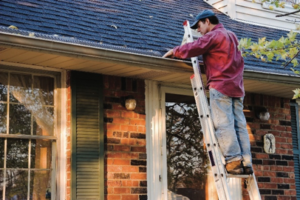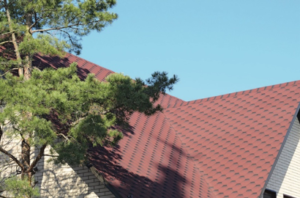Having a roof over your head is one of life’s basic necessities. While essential, a roof can also be the cause of claims and problems. The roof is often the first defense against the elements, and a key to the structural integrity of the entire building. Regular roof inspection, maintenance and repair should be done by everyone: businesses and homeowners alike.
Having a roof over your head is one of life’s basic necessities. While essential, a roof can also be the cause of claims and problems. The roof is often the first defense against the elements, and a key to the structural integrity of the entire building. Regular roof inspection, maintenance and repair should be done by everyone: businesses and homeowners alike.
Roof age and condition are key components in the underwriting process. It is estimated that 61 percent of roofs are classified to be younger than they actually are, which can significantly impact the insurance company’s claims experience. Older roofs tend to have more losses than newer roofs. An older roof misclassified as a newer roof may also lead to an inflated valuation and settlement. So, if a carrier misclassifies just 10 percent of their book, this could net out to a cost of $8.00 per policy, and an increased claims ratio.
Roof claims settlement can present some interesting problems to the insurance carrier. Shingles have a useful life of 20–30 years. When a roof is only partially damaged, the cosmetic issue comes into play. Over time, the color changes, sometimes unevenly, and it may be difficult to match the existing roof with new materials. The building owner may push for a complete replacement.
The Insurance Information Institute reports that damage related to wind and hail are the most frequent roof insurance claims, starting at speeds of 50 miles per hour. From 2009–2013, 1 in 30 insured homes had a property damage claim related to wind or hail each year with 1 in 55 having a claim related to water damage or freezing. Wind-driven debris also causes problems, including holes in the roof, damaged or missing shingles, guttering and flashing and cracked or broken slate, tile or concrete. Some damage may not be readily apparent as winds may have lifted the shingles, but not removed them. Nails or adhesive may have been loosened.
Prevention of serious losses can be achieved by following building codes and maintaining a roof in good repair with regular inspections. Evaluation of the roof following a wind or hail storm is important even if damage is not visible, since the damage may be hidden and lead to future problems. Once a leak is visible, serious damage may have already occurred. Preventive maintenance and checking for early warning signs can assist in forestalling a larger loss.
Roof inspections should include checking for cracked, missing, blistered or curled shingles, moss or lichens, staining, rust on the flashing, bent or damaged flashing or guttering and peeling paint under the eaves.

Improperly installed or damaged flashing may allow leakage of water into the structure resulting in moisture damage and mold buildup. It is important to check the condition of the flashing and the caulking regularly. While the purpose of flashing is to prevent leaks, it can also be a source of leakage if not properly maintained.
Gutters are designed to prevent basement flooding, siding and interior wall damage from water leakage and soil erosion among other things. Gutters should be cleaned and inspected at least twice a year. This can also assist in roof maintenance, since accumulations of shingle granules or pieces of broken shingles or tiles in the gutters may indicate roof problems.

Ice buildup in gutters can cause ice dams which push under shingles and result in damage. Ice buildup on the roof can damage flashing and/or the roof membrane.
Proper ventilation is also critical in maintaining roof condition. Vents are special grilled openings in the ridge peak, eaves and soffits to provide air flow to increase energy efficiency and prevent mold and ice dams. Adequate ventilation in the attic along with proper insulation will prevent heat buildup from heat escaping into the attic and also reduce attic moisture. In the summer, this ventilation will help remove very hot air from the attic. Care should be taken not to cover attic vents with insulation.

Tree branches growing too close to or touching the roof surface can be a source of roof damage. Along with the obvious hazard of a large limb or tree falling on the roof there is also the condition of branches rubbing against the roof surface and causing wear to the surface of the shingles over time.
If a new roof cover is required, it may be possible to install it over the existing cover, especially with asphalt shingles. The New York State Building Code R905, Section AJ502.4 does not allow this if the existing cover is water soaked, deteriorated or has inadequate base. The existing roof cannot have more than two layers of any roof covering material. A wood shake covering cannot be roofed over.
There are various roof types and each has advantages and disadvantages. They can be pitched or flat with several different types of roof covers ranging in price, life span and suitability. With all roof types, proper construction is key and maintenance is a crucial component.
With the advent of energy saving technology, flat roofs have advantages in the installation of solar panels and green roofs. A cover is applied over the roof deck. There are several basic types and there are many different manufacturers and variations within each type. Before making a final choice, the insured should carefully evaluate and research all aspects of the product, the manufacturer’s warranties and the qualifications of the contractor, as well as local building codes.
- Flat Roofs – More common in commercial buildings. Typical covers for flat roofs are single layer membrane, modified bitumen and built up.
- Shingles – Asphalt shingles are three tab shingles also known as composition shingles and are the most common choice. Asphalt shingles are made of fiberglass or organic materials. Fiberglass shingles have fire resistant properties and are lighter weight so are used more in warmer climates. Organic composition shingles are heavier and used in colder climates. Warranties vary depending on the manufacturer, type and quality and vary between 20 to 40 years. They are susceptible to damage by wind and hail and also to algae growth. Architectural shingles are a variation. The heavier architectural shingles are more resistant to wind.
Article by Sue C. Quimby, CPCU, AU, CIC, CPIW, DAE –MSO Inc.







